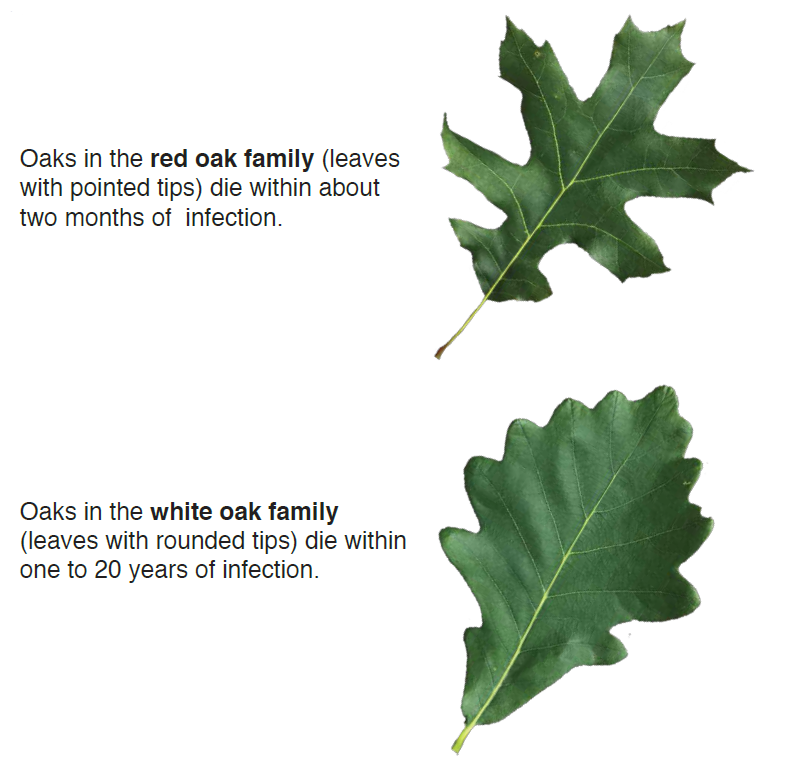By Val Cervenka, DNR forest health program consultant
As a woodland owner, you have likely heard of oak wilt, but you might be wondering how to know if your tree is infected or can you do anything about it.
Let’s start with the bottom-line message of prevention being the best way to manage oak wilt. Don’t prune or wound your oaks from April through July (this means avoiding activities in your woods that could injure any part of an oak), when the wilt-transmitting beetles are flying and may be covered in oak wilt spores from a nearby infected tree. If you must prune, cover the wound immediately with shellac or a water-based paint to limit beetle attraction.
Next, what type of oak trees do you have in your woodland? Oaks in the red oak group have pointed leaf tips, and those in the white oak group have rounded leaf tips. Red oaks are affected more dramatically than white oaks and die soon after infection. White and bur oaks can take years to die.
Difference between leaves of oaks in the red oak family versus white oak family.
Now, how do you know if your tree has oak wilt? A red oak tree with oak wilt may lose most of its leaves in one to two months, before normal leaf drop in autumn. White and bur oaks can shed some leaves in one or two months, but only from one or a few outer-canopy branch ends at a time. Don’t let just anyone tell you that your tree has oak wilt and that it needs to be cut down, because something else might be affecting your tree. To know for sure, submit a sample to the UMN Plant Disease Clinic | Plant Disease Clinic.
Wilting oak leaves on a red oak tree.
But what if only the top of the tree looks like it’s dying? Then the cause might be twolined chestnut borer, a beetle whose larvae feed below the bark and slowly kill the tree, leaving a distinctive pattern of dead branches at the top, dying branches with red-brown leaves in the middle, and green leaves at the bottom of the canopy: “dead, red, and green.” Twolined chestnut borer is a native killer of stressed oaks, which is a common occurrence after a drought (you might start seeing more trees with twolined chestnut borer damage in the next few years due to the 2021 drought). To help you differentiate between twolined chestnut borer and oak wilt, the DNR Forest Health Team developed the What’s Attacking My Oak Tree? Factsheet.
Oak tree infested with twolined chesnut borer has dead branches at the top, dying branches with red-brown leaves in the middle, and green leaves at the bottom of the canopy.
What do you do next, if you have confirmed your tree has oak wilt? Admittedly, managing oak wilt is tricky, but there are several options available to woodland owners. Refer to the Minnesota DNR Oak Wilt Guide or contact a DNR stewardship forester for precise management details.
Finally, the DNR forest health staff want to alert people that oak wilt is spreading north to areas where it has never been in Minnesota. If you find oak wilt at the edge of its current range north of Hinckley, Mora, and Little Falls, or west of Little Falls and St. Cloud, please report it to the Great Lakes Early Detection Network (gledn.org) or to your nearest DNR Forestry office. When we know where oak wilt is, we can take steps to manage it early, before it spreads farther.
The shaded area is the oak wilt high-risk zone and shows the known range of oak wilt in Minnesota as of October 2021.



